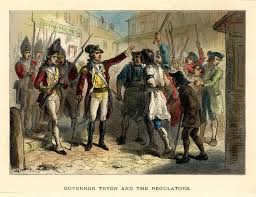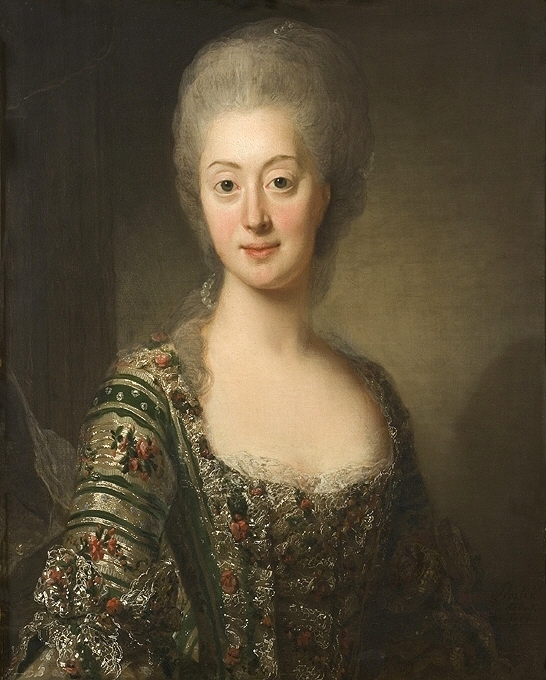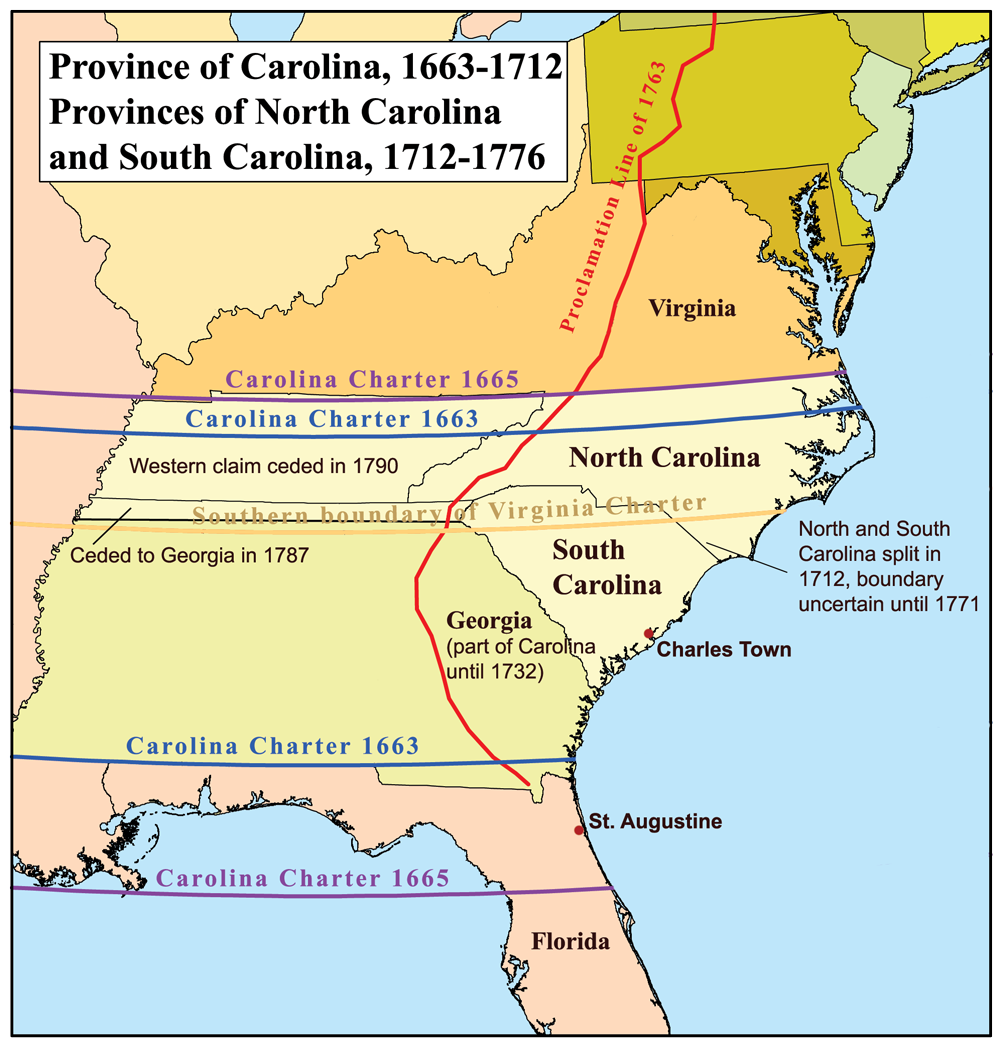|
1771
Events January– March * January 5 – The Great Kalmyk (Torghut) Migration is led by Ubashi Khan, from the east bank of the Lower Volga River back to the homeland of Dzungaria, at this time under Qing Dynasty rule. * January 9 – Emperor Go-Momozono accedes to the throne of Japan, following his aunt's abdication. * February 12 – Upon the death of Adolf Frederick, he is succeeded as King of Sweden by his son Gustav III. At the time, however, Gustav is unaware of this, since he is abroad in Paris. The news of his father's death reaches him about a month later. * March – War of the Regulation: North Carolina Governor William Tryon raises a militia, to put down the long-running uprising of backcountry militias against North Carolina's colonial government. * March 12 – The North Carolina General Assembly establishes Wake County (named for Margaret Wake, the wife of North Carolina Royal Governor William Tryon) from portions of Cumberland, ... [...More Info...] [...Related Items...] OR: [Wikipedia] [Google] [Baidu] |
War Of The Regulation
The Regulator Movement, also known as the Regulator Insurrection, War of Regulation, and War of the Regulation, was an uprising in Provincial North Carolina from 1766 to 1771 in which citizens took up arms against colonial officials, whom they viewed as corrupt. Though the rebellion did not change the power structure, some historians consider it a catalyst to the American Revolutionary War. Others like John Spencer Bassett take the view that the Regulators did not wish to change the form or principle of their government, but simply wanted to make the colony's political process more equal. They wanted better economic conditions for everyone, instead of a system that heavily benefited the colonial officials and their network of plantation owners mainly near the coast. Bassett interprets the events of the late 1760s in Orange and surrounding counties as "...a peasants' rising, a popular upheaval." Causes of rebellion Population increase and new settlers arrive Provincial North an ... [...More Info...] [...Related Items...] OR: [Wikipedia] [Google] [Baidu] |
William Tryon
Lieutenant-General William Tryon (8 June 172927 January 1788) was a British Army officer and colonial administrator who served as governor of North Carolina from 1764 to 1771 and the governor of New York from 1771 to 1777. He also served during the Seven Years' War, the Regulator Movement and the American War of Independence. Early life and career William Tryon was born on 8 June 1729 at the Tryon family's seat at Norbury Park, Surrey, the son of Charles Tryon and Lady Mary Shirley. His maternal grandfather was Robert Shirley, 1st Earl Ferrers. In 1751, Tryon enlisted the British Army as a lieutenant in the 1st Regiment of Foot Guards and was promoted to the rank of captain later that year. In 1758, Tryon was promoted to lieutenant-colonel. Seven Years' War During the Seven Years' War, Tryon and his regiment were involved in the British raid on Cherbourg. They landed at Cherbourg and destroyed all military facilities. In September, they reembarked for St Malo, whe ... [...More Info...] [...Related Items...] OR: [Wikipedia] [Google] [Baidu] |
Adolf Frederick, King Of Sweden
Adolf Frederick, or Adolph Frederick ( sv, Adolf Fredrik, german: Adolf Friedrich; 14 May 171012 February 1771) was King of Sweden from 1751 until his death. He was the son of Christian August of Holstein-Gottorp, Prince of Eutin, and Albertina Frederica of Baden-Durlach. He was an uncle of Catherine the Great The first king from the House of Holstein-Gottorp, Adolf Frederick was a weak monarch, installed as first in line to the throne following the parliamentary government's failure to reconquer the Baltic provinces in 1741–43. Aside from a few attempts, supported by pro- absolutist factions among the nobility, to reclaim the absolute monarchy held by previous monarchs, he remained a mere constitutional figurehead until his death. His reign saw an extended period of internal peace. However, the finances stagnated following failed mercantilist doctrines pursued by the Hat administration. The Hat administration ended during the 1765–66 parliament, where the Cap opposit ... [...More Info...] [...Related Items...] OR: [Wikipedia] [Google] [Baidu] |
Kalmyk People
The Kalmyks ( Kalmyk: Хальмгуд, ''Xaľmgud'', Mongolian: Халимагууд, ''Halimaguud''; russian: Калмыки, translit=Kalmyki, archaically anglicised as ''Calmucks'') are a Mongolic ethnic group living mainly in Russia, whose ancestors migrated from Dzungaria. They created the Kalmyk Khanate from 1635 to 1779 in Russia's North Caucasus territory. Today they form a majority in Kalmykia, located in the Kalmyk Steppe, on the western shore of the Caspian Sea. They are the only traditionally Buddhist people whose homeland is located within Europe. Through emigration, small Kalmyk communities have been established in the United States, France, Germany, and the Czech Republic. Origins and history Early history of the Oirats The Kalmyk are a branch of the Oirat Mongols, whose ancient grazing-lands spanned present-day parts of Kazakhstan, Russia, Mongolia and China. After the fall of the Mongol Yuan dynasty of China in 1368, the Oirats emerged as a ... [...More Info...] [...Related Items...] OR: [Wikipedia] [Google] [Baidu] |
Smeatonian Society Of Civil Engineers
The Smeatonian Society of Civil Engineers was founded in England in 1771. It was the first engineering society to be formed anywhere in the world, and remains the oldest. It was originally known as the Society of Civil Engineers, being renamed following its founder's death. History The first known formal meeting of civil engineers in Britain took place at the King's Head tavern in Holborn, London, on 15 March 1771, when seven of the leading engineers of the time agreed to establish a Society of Civil Engineers. The leading light of the new Society was John Smeaton who was the first engineer to describe himself as a "Civil Engineer", having coined the term to distinguish himself from the military engineers graduating from the Royal Military Academy at Woolwich. The other founding members were Thomas Yeoman, Robert Mylne, Joseph Nickalls, John Grundy, John Thompson and James King. In the first year they were joined by John Golborne, William Black, Robert Whitworth and Hugh Hen ... [...More Info...] [...Related Items...] OR: [Wikipedia] [Google] [Baidu] |
Emperor Go-Momozono
was the 118th Emperor of Japan, according to the traditional order of succession.Imperial Household Agency (''Kunaichō'') 後桃園天皇 (118)/ref>Ponsonby-Fane, Richard. (1959). ''The Imperial House of Japan'', p. 120. He was named after his father Emperor Momozono. The wording of in the name translates as "later", so he has also been referred to as "Later Emperor Momozono", "Momozono, the second", or "Momozono II". Go-Momozono became Emperor in 1771, but had a short reign that lasted to his death in 1779. Events during his reign were confined to a series of natural calamities that occurred in 1772, aside from that the political situation with the Shōgun was quiet. Things came to a head towards the end of Go-Momozono's life in the form of a succession issue as the Emperor had no eligible successor. As a result, he hastily adopted a son on his deathbed who later became the next Emperor. Genealogy He was the son of Emperor Momozono with a lady-in-waiting.Before becoming e ... [...More Info...] [...Related Items...] OR: [Wikipedia] [Google] [Baidu] |
Gustav III Of Sweden
Gustav III (29 March 1792), also called ''Gustavus III'', was King of Sweden from 1771 until his assassination in 1792. He was the eldest son of Adolf Frederick of Sweden and Queen Louisa Ulrika of Prussia. Gustav was a vocal opponent of what he saw as the abuse of political privileges seized by the nobility since the death of King Charles XII. Seizing power from the government in a coup d'état, called the Swedish Revolution, in 1772 that ended the Age of Liberty, he initiated a campaign to restore a measure of Royal autocracy, which was completed by the Union and Security Act of 1789, which swept away most of the powers exercised by the Swedish Riksdag (parliament) during the Age of Liberty, but at the same time it opened up the government for all citizens, thereby breaking the privileges of the nobility. A bulwark of enlightened absolutism, Gustav spent considerable public funds on cultural ventures, which were controversial among his critics, as well as military attemp ... [...More Info...] [...Related Items...] OR: [Wikipedia] [Google] [Baidu] |
Royal Colony Of North Carolina
Province of North Carolina was a province of Great Britain that existed in North America from 1712(p. 80) to 1776. It was one of the five Southern colonies and one of the thirteen American colonies. The monarch of Great Britain was represented by the Governor of North Carolina, until the colonies declared independence on July 4, 1776. Etymology "Carolina" is taken from the Latin word for "Charles" ( Carolus), honoring King Charles II, and was first named in the 1663 Royal Charter granting to Edward, Earl of Clarendon; George, Duke of Albemarle; William, Lord Craven; John, Lord Berkeley; Anthony, Lord Ashley; Sir George Carteret, Sir William Berkeley, and Sir John Colleton the right to settle lands in the present-day U.S. states of North Carolina, Tennessee, South Carolina, Georgia, Alabama, Mississippi, and Florida. History King Charles II granted the Charter of Carolina in 1663 for land south of the British Colony of Virginia and north of Spanish Flor ... [...More Info...] [...Related Items...] OR: [Wikipedia] [Google] [Baidu] |
Wake County, North Carolina
Wake County is located in the U.S. state of North Carolina. In the 2020 census, its population was 1,129,410, making it North Carolina's most-populous county. From July 2005 to July 2006, Wake County was the 9th-fastest growing county in the United States, with the town of Cary and the city of Raleigh being the 8th- and 15th-fastest growing cities, respectively. Its county seat is Raleigh, which is also the state capital. Eleven other municipalities are in Wake County, the largest of which is Cary, the third-largest city of the Research Triangle region and the seventh-largest municipality in North Carolina. It is governed by the Wake County Board of Commissioners, coterminous with the Wake County Public School System school district, with law enforcement provided by the Wake County Sheriff's Department. It is also part of the wider Triangle J Council of Governments, which governs regional planning. History Early history Prior to English colonization, present-day Wake ... [...More Info...] [...Related Items...] OR: [Wikipedia] [Google] [Baidu] |
Orange County, North Carolina
Orange County is a county located in the Piedmont region of the U.S. state of North Carolina. As of the 2020 census, the population was 148,696. Its county seat is Hillsborough. Orange County is included in the Durham–Chapel Hill, NC Metropolitan Statistical Area, which is also included in the Raleigh–Durham–Chapel Hill, NC Combined Statistical Area. This had a 2012 estimated population of 1,998,808. It is home to the University of North Carolina at Chapel Hill, the flagship institution of the University of North Carolina System and the oldest state-supported university in the United States. History The county was formed in 1752 from parts of Bladen, Granville, and Johnston counties. It was named for the infant William V of Orange, whose mother Anne, daughter of King George II of Great Britain, was then regent of the Dutch Republic. In 1771, Orange County was greatly reduced in area. The western part of it was combined with the eastern part of Rowan County to for ... [...More Info...] [...Related Items...] OR: [Wikipedia] [Google] [Baidu] |
Torghut
The Torghut ( Mongolian: Торгууд, , Torguud), , "Guardsman" are one of the four major subgroups of the Four Oirats. The Torghut nobles traced its descent to the Keraite ruler Tooril; also many Torghuts descended from the Keraites. History They might have been kheshigs of the Great Khans before Kublai Khan. The Torghut clan first appeared as an Oirat group in the mid-16th century. After the collapse of the Four Oirat Alliance, the majority of the Torghuts under Kho Orluk separated from other Oirat groups and moved west to the Volga region in 1630, forming the core of the Kalmyks. A few Torghut nobles followed Toro Baikhu Gushi Khan to Qinghai Lake (Koke Nuur), becoming part of the so-called Upper Mongols. In 1698, 500 Torghuts went on pilgrimage to Tibet but were unable to return. Hence, they were resettled in Ejin River by the Kangxi Emperor of China's Qing dynasty. In 1699 15,000 Torghut households returned from the Volga region to Dzungaria where they joined the ... [...More Info...] [...Related Items...] OR: [Wikipedia] [Google] [Baidu] |
February 12
Events Pre-1600 *1404 – The Italian professor Galeazzo di Santa Sophie performed the first post-mortem autopsy for the purposes of teaching and demonstration at the Heiligen–Geist Spital in Vienna. *1429 – English forces under Sir John Fastolf defend a supply convoy carrying rations to the army besieging Orléans in the Battle of the Herrings. *1502 – Isabella I issues an edict outlawing Islam in the Crown of Castile, forcing virtually all her Muslim subjects to convert to Christianity. * 1502 – Vasco da Gama with 15 ships and 800 men sets sail from Lisbon, Portugal on his second voyage to India. *1541 – Santiago, Chile is founded by Pedro de Valdivia. *1593 – Japanese invasion of Korea: Approximately 3,000 Joseon defenders led by general Kwon Yul successfully repel more than 30,000 Japanese forces in the Siege of Haengju. 1601–1900 *1689 – The Convention Parliament declares that the flight to France in 1688 by James ... [...More Info...] [...Related Items...] OR: [Wikipedia] [Google] [Baidu] |










